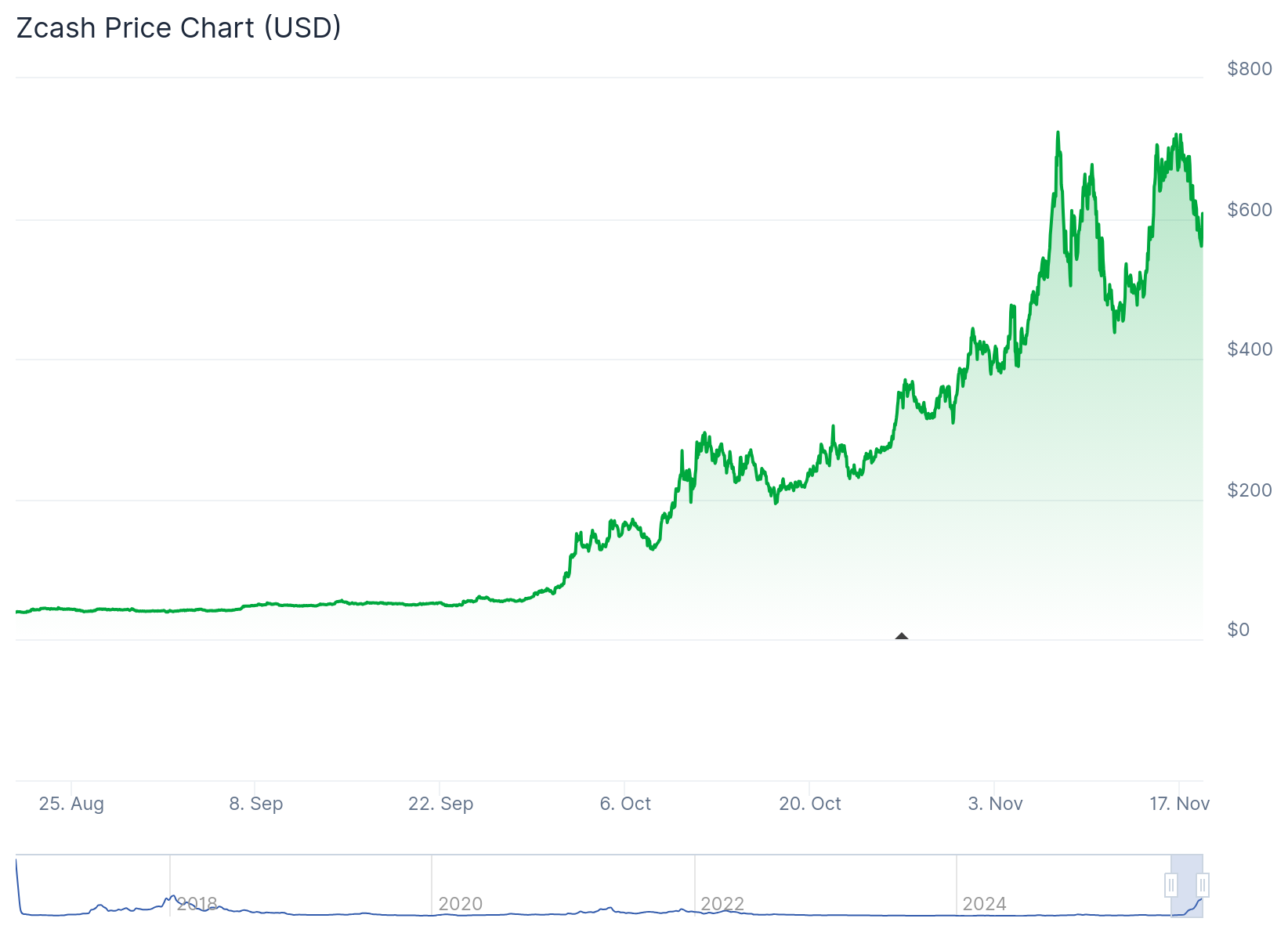Zcash holders with coins from before 2018 are running into trouble moving funds from Ledger hardware wallets, just as ZEC has surged to multi-year highs. Ledgers CTO said shielded transfers and some very old transparent transactions are not supported today, with a restoration plan targeted for Q2 2026 (source).
How the issue surfaced
Bitcoin developer Jameson Lopp flagged the problem after trying to spend ZEC from a 2017-era wallet. He reported that his Nano X and the Ledger Live app crashed while signing, and that other software wallets also struggled. Edge and Zashi would not accept his wallet birthday (the date used to speed up syncing for light wallets), and Electrums Zcash servers were not functioning (post 1, post 2).
What changed under the hood
The snag ties back to Zcashs Sapling upgrade in October 2018, which introduced a new transaction format and overhauled how private (shielded) payments work (Sapling details). Zcashs developer docs note that after Sapling, wallets and light clients needed to adopt the newer formata shift that has historically been tricky for hardware wallets and simplified (SPV) clients (developer guide). Lopp concluded that some pre-2018 UTXOs (unspent outputs) require spending via an older transaction version, and that Ledger had removed support for itwhich is why those coins cant currently move.
Community pushback and the grant debate
Ledgers plan to re-add support came with a twist: the company said it applied for a grant from the Zcash Foundation to help fund the work. That didnt sit well with many users, who questioned why a profitable firm would seek outside money to restore a capability it once had. Ledgers CEO has said revenue is in the triple-digit millions for 2025 and the company is weighing a U.S. listing or private financing (FT). Critics argued that a core spending function should not hinge on a grant, especially for long-time users who bought devices expecting continuity.
Why this matters
- Legacy risk: Crypto protocols evolve. If wallets drop older formats, early coins can become hard to move without specialized software.
- Trust in hardware wallets: People buy devices like Ledger for peace of mind. Breaking legacy spending paths erodes that trust.
- Market timing: Being unable to transact during big price moves can mean missed exits or riskier workarounds.
Not just a Ledger problem
While Ledger is at the center of the controversy, Lopps tests show the friction is wider. Multiple light and desktop wallets struggled with old ZEC states. That suggests a broader maintenance burden across the Zcash ecosystem when it comes to pre-2018 transaction types and infrastructure.
What users can do now
- Check status updates from Ledger and the Zcash Foundation regarding legacy support timelines.
- Avoid rushing to move funds using unfamiliar tools; verify any wallets support for older Zcash formats before initiating a transfer.
- Ensure backups of seed phrases are secure. If in doubt, consult official documentation and community channels before attempting recovery steps.
Market backdrop
ZEC fell more than 10% on the day to around $600, but remains up over 1,400% in three months after rallying from roughly $55 to above $720levels last seen in 2018.

The bigger picture
The episode is a reminder that cryptos user experience still depends on constant maintenance across wallets, servers, and protocol upgrades. For investors, its a case study in version risk: not just price volatility, but the risk that old assets may require legacy paths that fall out of support. For builders, it highlights the need to plan for long tail users whose coins predate major upgrades.
